VR Zeitreise
Description
The project “VR Zeitreise” (VR Timetravel) is part of the exhibition area “Time and Space” in the new Deutsches Museum Nürnberg – Zukunftsmuseum. The museum itself is themed around state-of-the-art technologies and how they potentially shape the future. The VR Zeitreise offers an outlook of Nuremberg in the year 2050 by showcasing the exhibits presented in the museum in a fictional context.
The project allows four visitors to live through this experience cooperatively while they share the same physical space. This new approach to VR multiplayer enables the visitors to move freely and to interact with each other directly and offers academics a new publicly available experimental area to study.
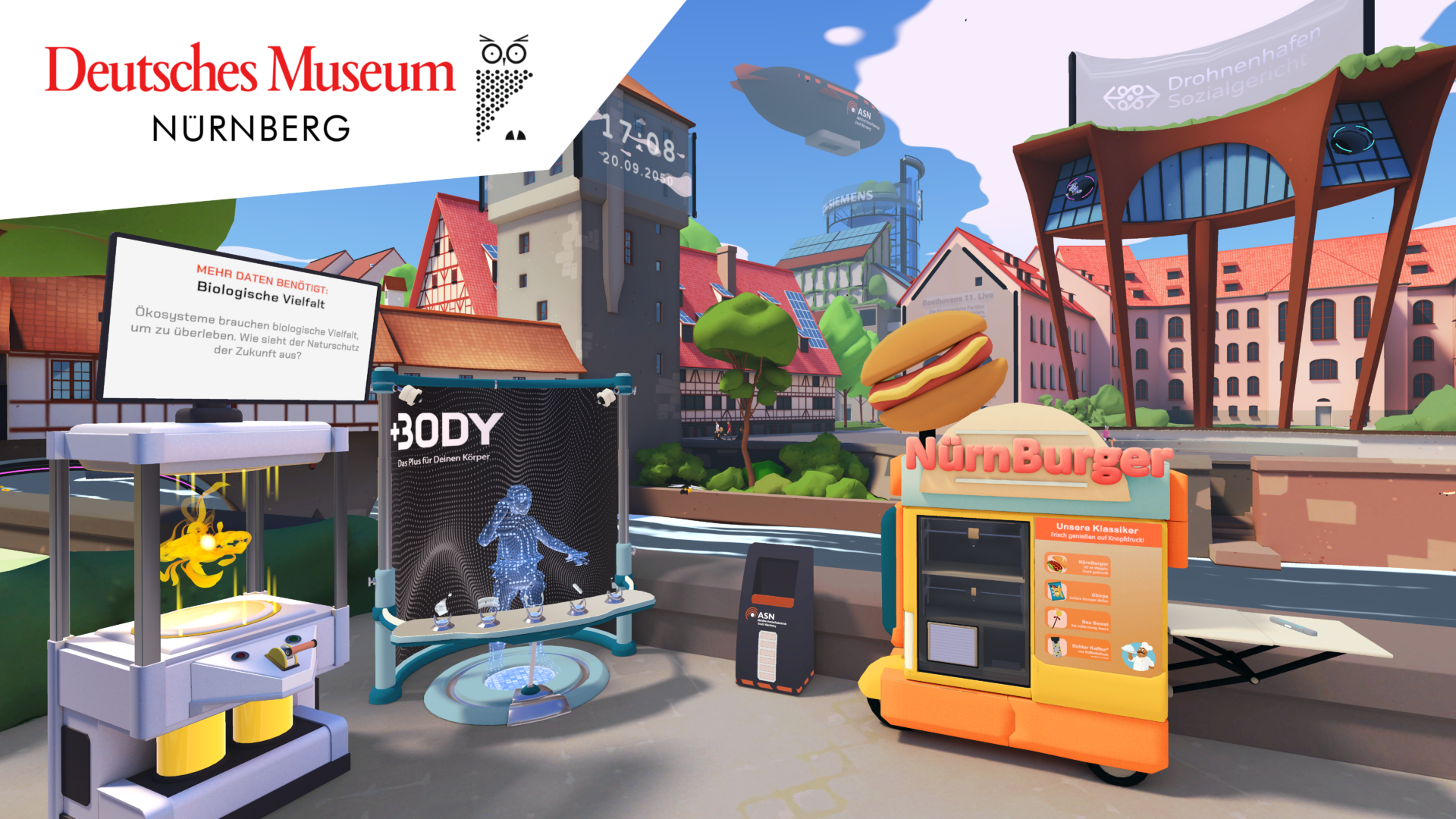
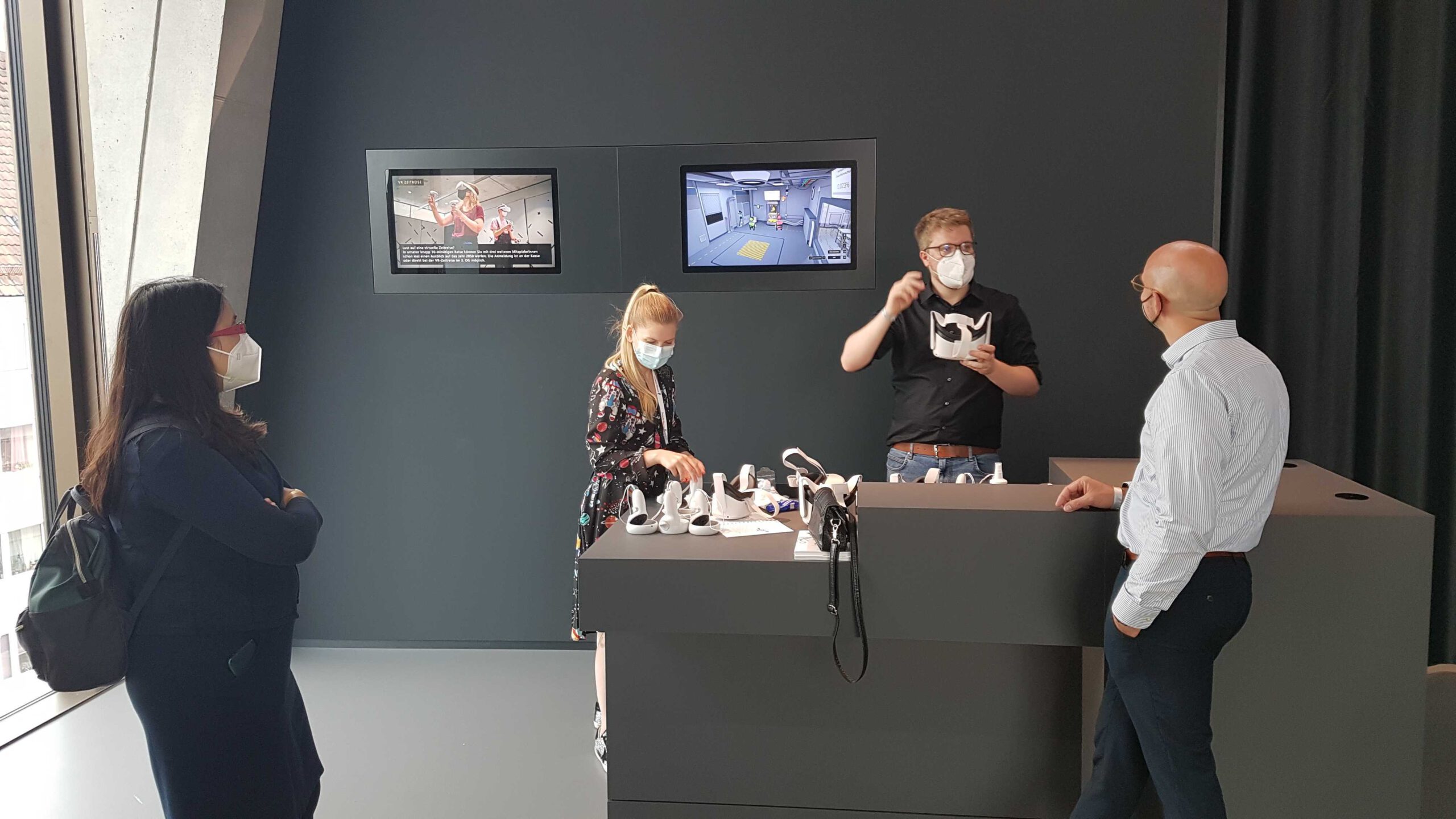
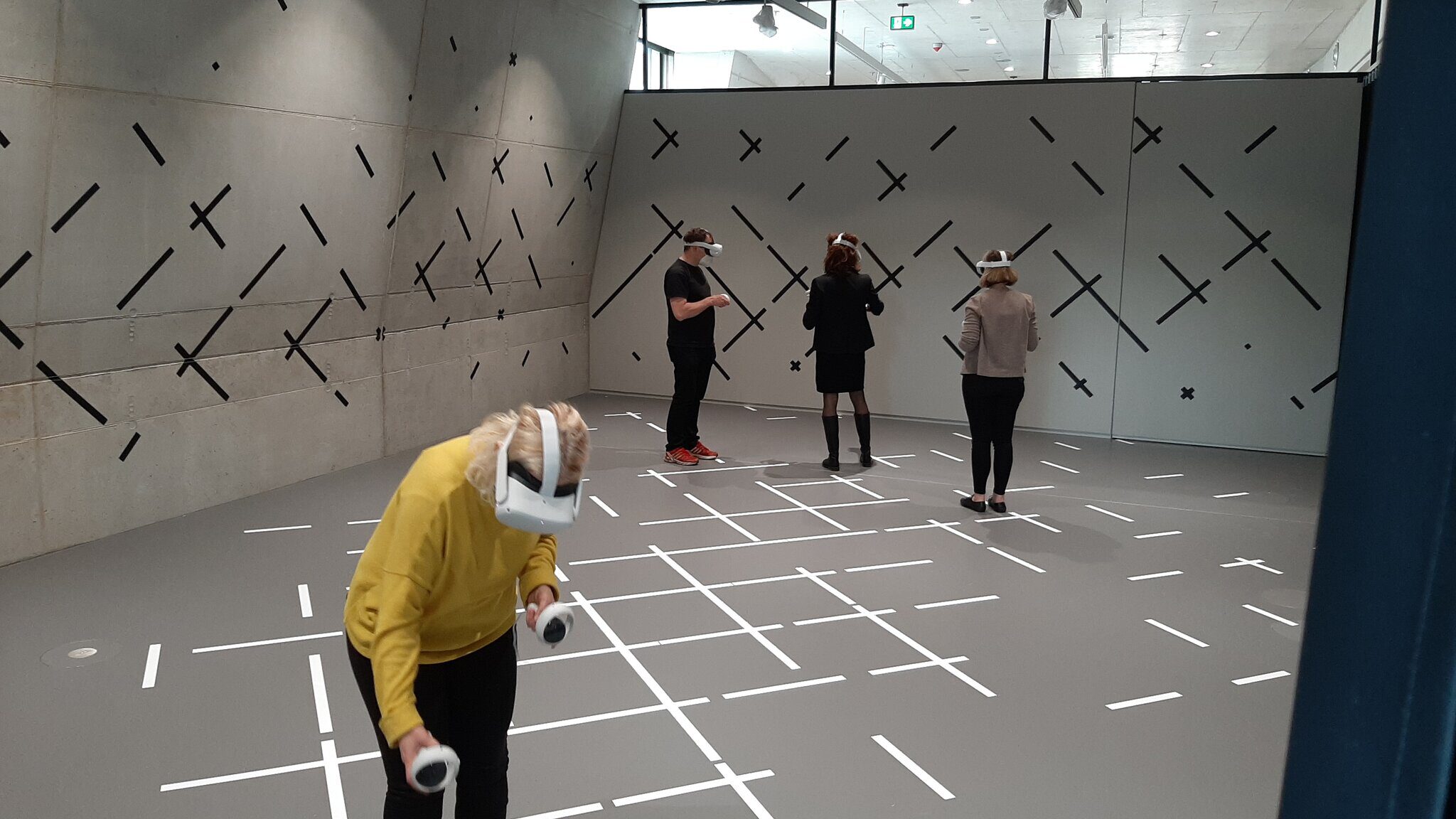
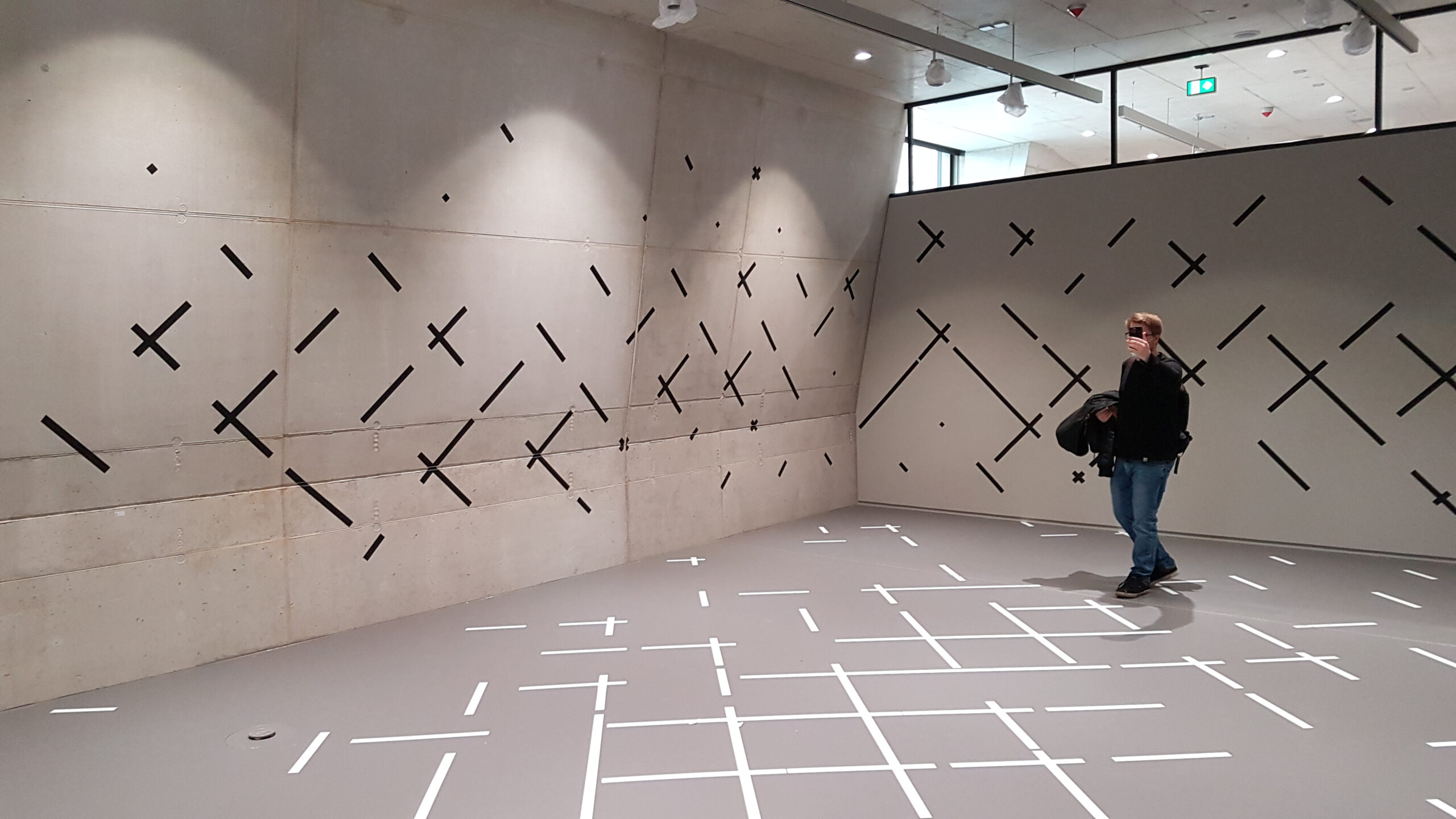
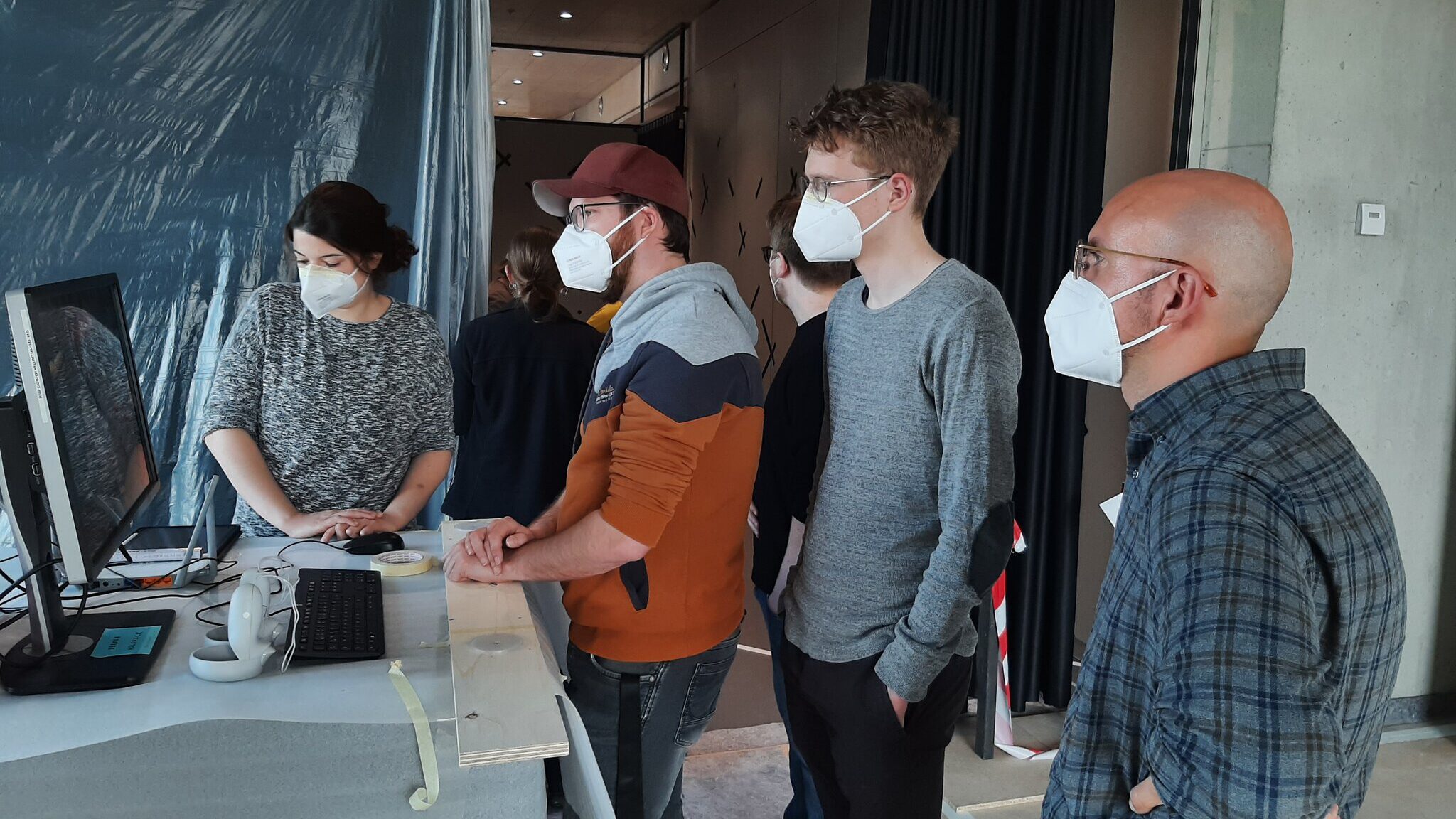
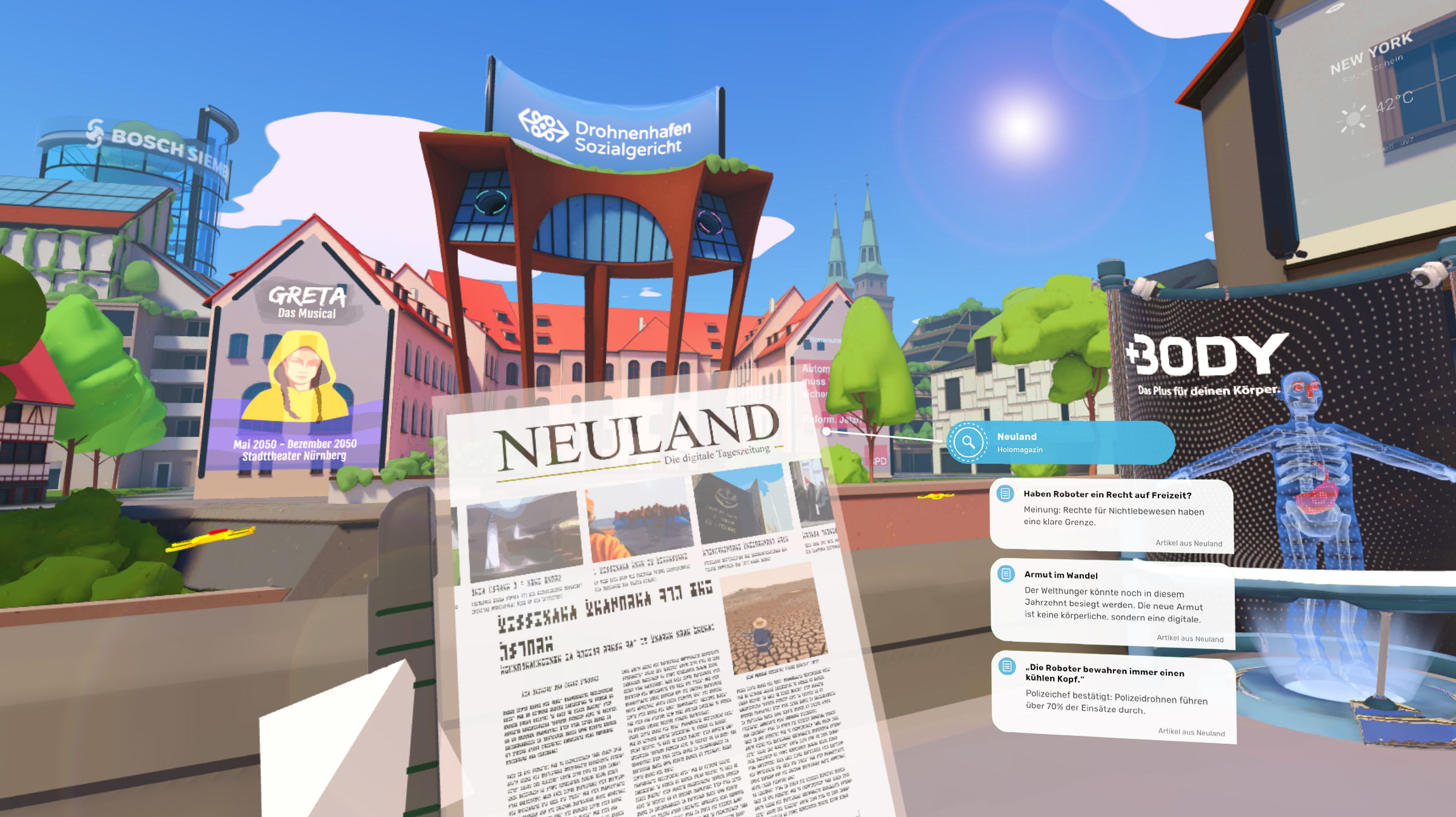
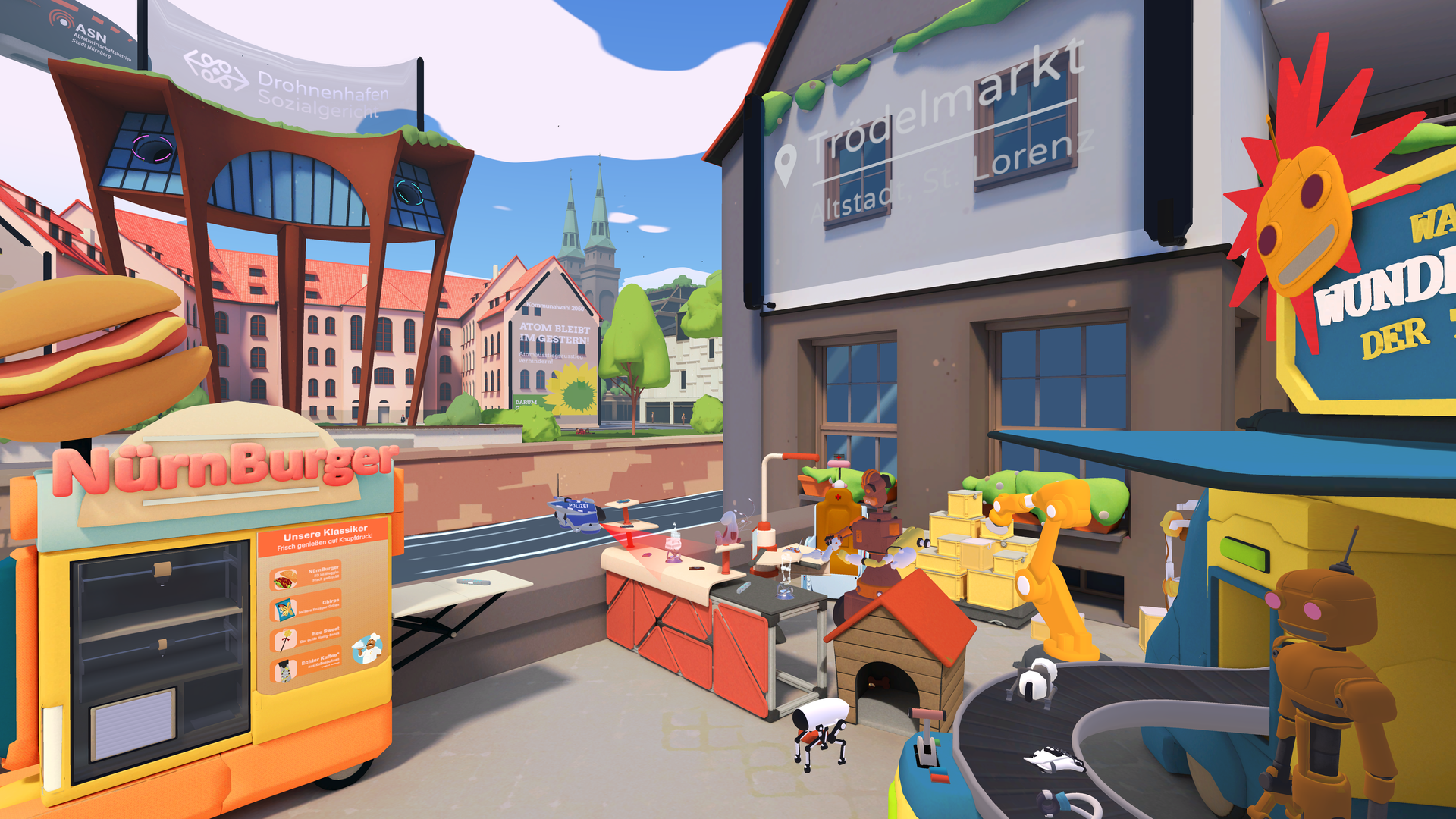
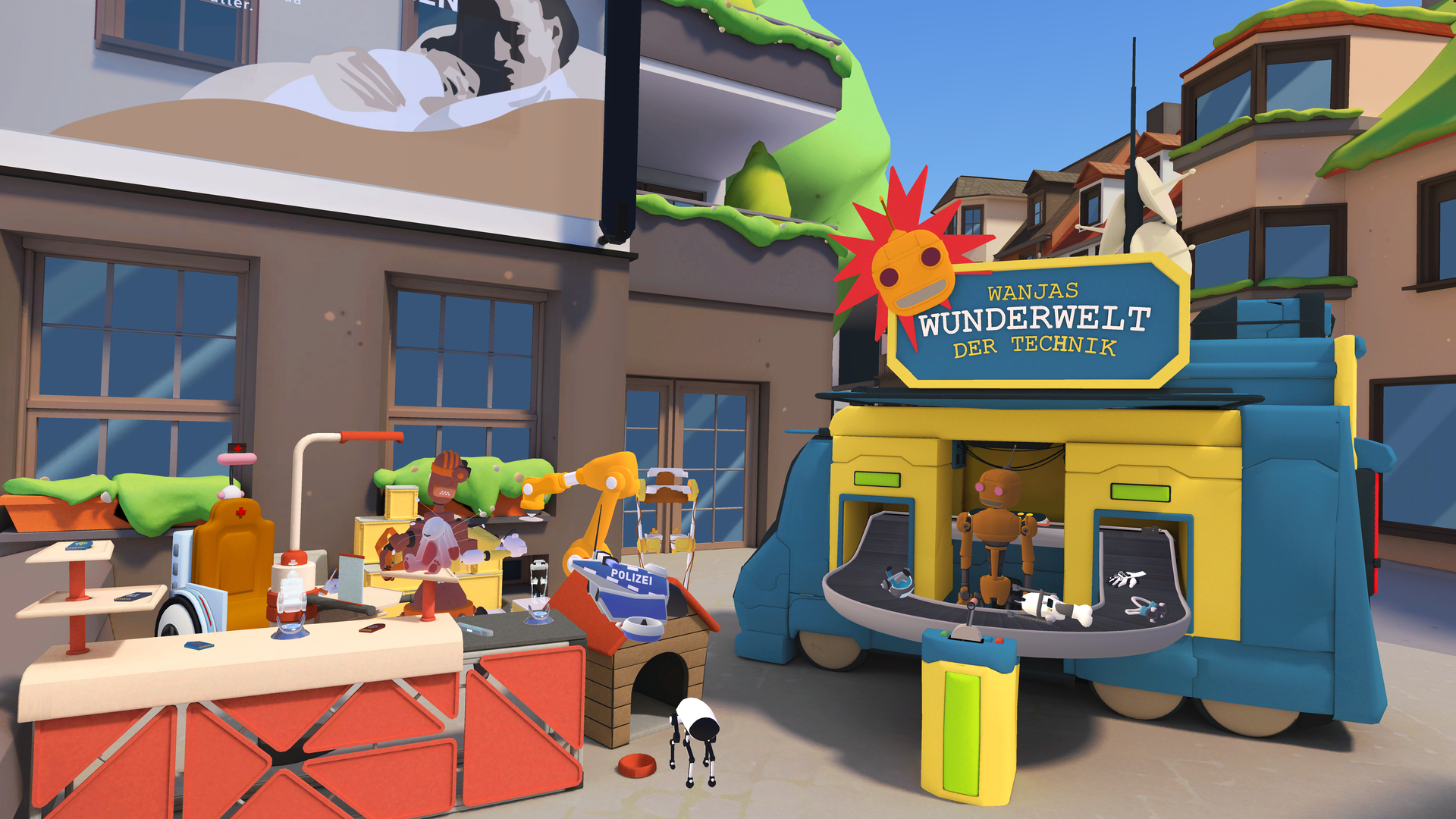
Most impacting Worksamples
Shared-Space Multiplayer
- Establishing a Server-Client architecture between a Windows server and four Oculus Quest 2 Business clients
- Calibrating the VR Headset to line up the virtual scene with the physical space in reality by a margin of less than 10 cm
- Keeping the player avatars in sync all the time on every participating HMD as an essential element of the game experience and safety
- Implementing general replicated gameplay
- Sharing my multiplayer coding knowledge with others or introducing them to the topic
Narrative & Gameplay
- Creating the technical means that enables the team to design missions
- Creating a mission director that selects from those previously designed missions and acts on their progress
- Implementing the central gameplay mechanic for the player to interact with these missions
- Implementing the tutorial
- Constructing a narrative system that presents all players the same virtual reality and facilitates the team with the methods to intertwine story elements, the tutorial, and gameplay to a whole experience
Performance
- Identifying the platform’s technical limitations and defining the budget and guidelines for all aspects of the project
- Measuring the VR Headset performance with Unity’s built-in profiler and RenderDoc
- Monitoring the server and Network/Wifi performance
- Taking actions on behave of the results to keep the game within the hardware budget
- Assuring the quality of the product with recurring playtests, especially after “merge-days”
Department Management
- Keeping track of upcoming tasks
- Keeping everyone busy
- Preventing bottlenecks
- Streamline dependencies
- Ensuring quality communication within and to other departments
- Stitching all incoming elements together into a solid system
- Coming up with an answer to every technical issue
- Handing over responsibilities
Project Overview
Project Type
Research Cooperation between the TH Köln and the Deutsches Museum
Development Time & Current State
16 Months – Released and currently displayed in Nuremberg
Platform
Windows (Server), Oculus Quest 2 Business (Client)
Genre
Shared-Space multiplayer VR experience
Team Size:
20+
My Role
Lead Programmer
My Accomplishments
This project challenged every aspect of my prior knowledge to exceed the platform’s limitations especially concerning shared-space multiplayer. Additionally, it demanded much research in those areas I didn’t feel comfortable in the beginning to have a precise answer for every technical detail coming up. It underlines my ability to direct a project’s technical facets from its infancy to its successful release.
Tools
Unity, MS Visual Studio, Rider, Plastic, Jira, Mirror, RenderDoc for Oculus
